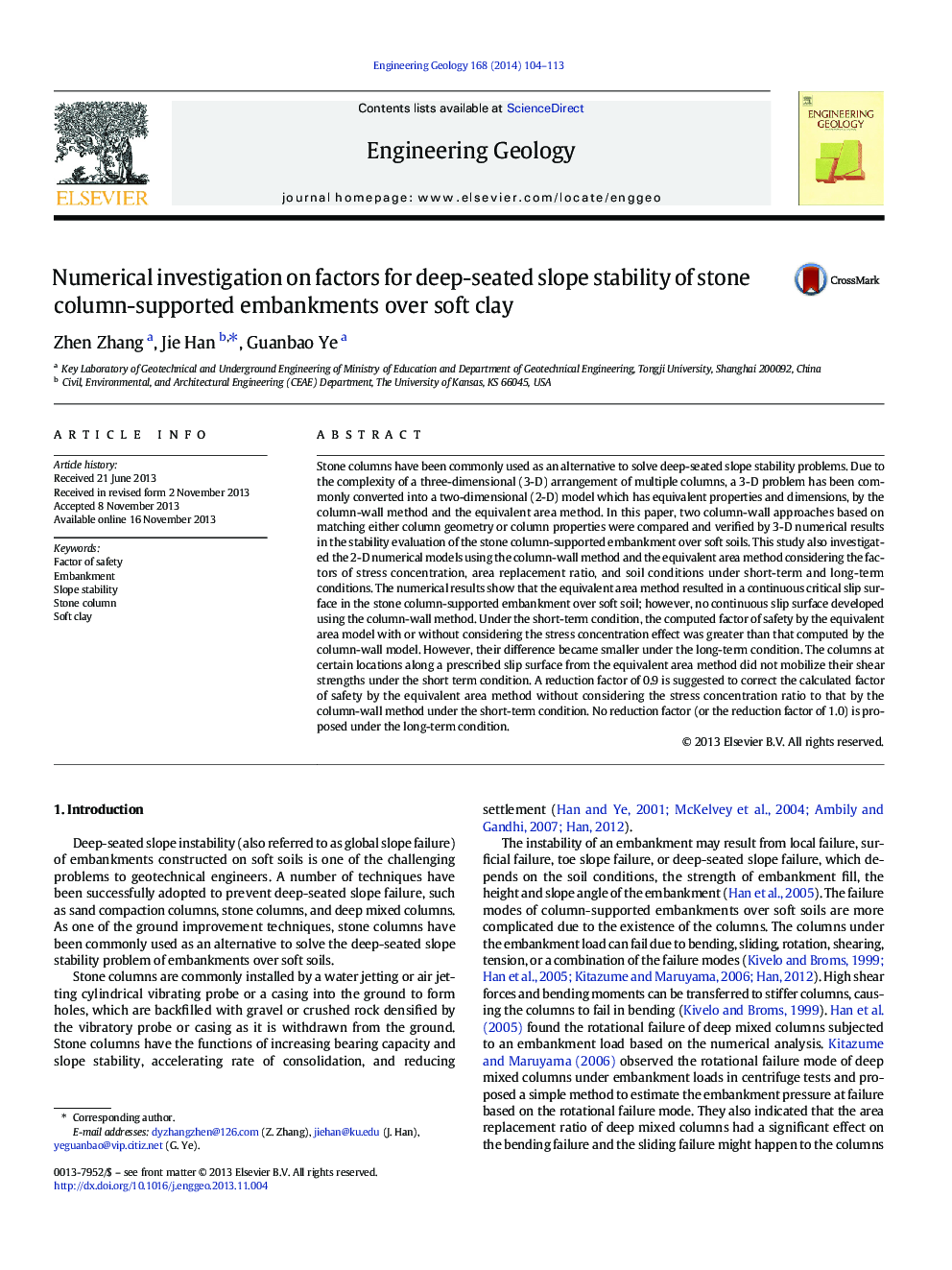| کد مقاله | کد نشریه | سال انتشار | مقاله انگلیسی | نسخه تمام متن |
|---|---|---|---|---|
| 4743493 | 1641816 | 2014 | 10 صفحه PDF | دانلود رایگان |
• The 2-D column-wall models had equivalent results as the 3-D models.
• Stress concentration effect should not be considered in stability analysis.
• Stone columns did not all mobilize the shear strengths under a short-term condition.
• The equivalent area models yielded higher FS under a short-term condition.
Stone columns have been commonly used as an alternative to solve deep-seated slope stability problems. Due to the complexity of a three-dimensional (3-D) arrangement of multiple columns, a 3-D problem has been commonly converted into a two-dimensional (2-D) model which has equivalent properties and dimensions, by the column-wall method and the equivalent area method. In this paper, two column-wall approaches based on matching either column geometry or column properties were compared and verified by 3-D numerical results in the stability evaluation of the stone column-supported embankment over soft soils. This study also investigated the 2-D numerical models using the column-wall method and the equivalent area method considering the factors of stress concentration, area replacement ratio, and soil conditions under short-term and long-term conditions. The numerical results show that the equivalent area method resulted in a continuous critical slip surface in the stone column-supported embankment over soft soil; however, no continuous slip surface developed using the column-wall method. Under the short-term condition, the computed factor of safety by the equivalent area model with or without considering the stress concentration effect was greater than that computed by the column-wall model. However, their difference became smaller under the long-term condition. The columns at certain locations along a prescribed slip surface from the equivalent area method did not mobilize their shear strengths under the short term condition. A reduction factor of 0.9 is suggested to correct the calculated factor of safety by the equivalent area method without considering the stress concentration ratio to that by the column-wall method under the short-term condition. No reduction factor (or the reduction factor of 1.0) is proposed under the long-term condition.
Journal: Engineering Geology - Volume 168, 16 January 2014, Pages 104–113
